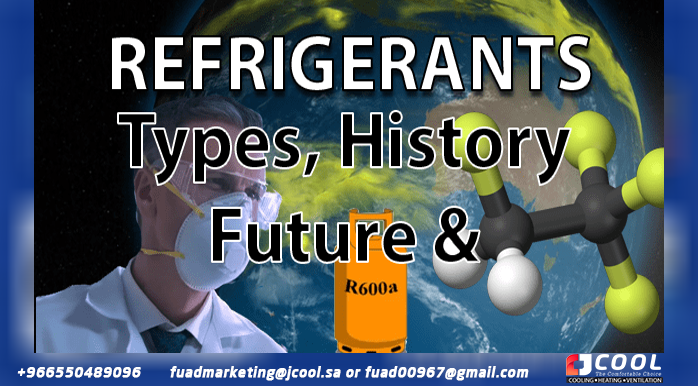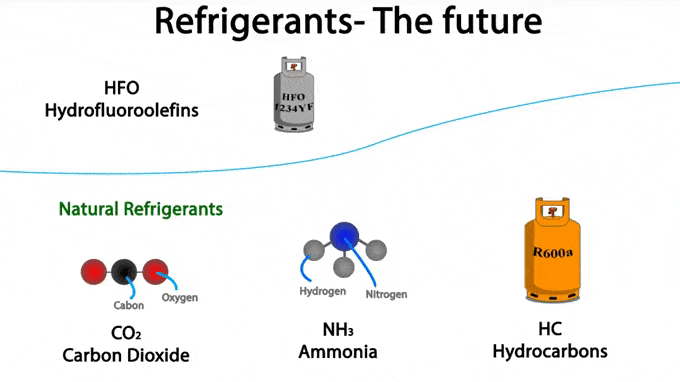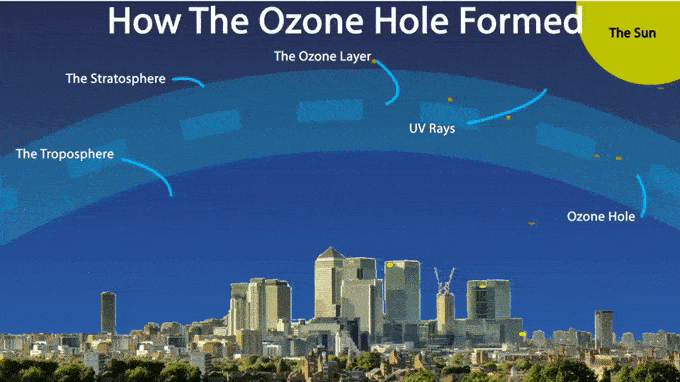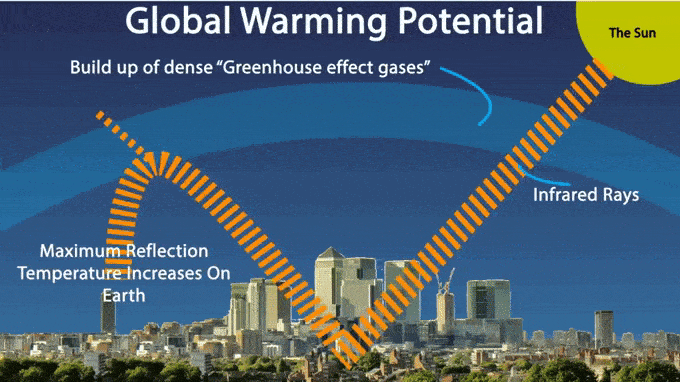The types of refrigerant, their history and the future
 |
| Refrigerant type, history and future |
What are the different types of refrigerants and what does the future hold for refrigerants with the new and strict laws and regulations that are coming around the world. Let's take a look at the current refrigerants, as well as the ones we will have to adopt in the near future, and understand why they are changing.
If you scroll down to the bottom of this article, you will find a video tutorial on the subject.
For more information, please visit the Jcool website. Jcool is your source for information and resources that can help you transition the refrigeration industry to natural, climate-friendly refrigerants. They have a deep understanding of all the new regulations and their effects, and are ready to share their insights and solutions with you. They have also made useful tools such as the Refrigerant Upgrade Guide, the Low-GWP Tool,
and Coolselector 2 app available for free on their website. You can access these now by visiting Refrigerants.Jcool.com.
When we talk about refrigerants, we mean a fluid that can easily evaporate and condense continuously. We learned how a coolant works in our latest article which you can access by clicking here.
The main types of historical and current refrigerants are
· CFC – ChloroFluoroCarbons
· HCFCs – Hydrochlorofluorocarbons
· HFCs – Hydrofluorocarbons
However, all have been or will be replaced in the future due to their environmental effects. So if you work in the refrigeration industry or are studying to enter it, you will see a great transition to the next generation during your career.
Now, unless you're one of the scientists developing these refrigerants, you don't need to know what all the numbers and letters mean, but you do need to know the basics. The "R" simply stands for refrigerant, the numbers signify the amount of each atom, each number represents a specific type, and the lowercase letters at the end give a compound symmetry scale. (In white, a, b or c).
 |
| Future of refrigerants |
What does the future of refrigerants look like?
The market is heading in the following directions. One route is through natural refrigerants such as carbon dioxide, ammonia, and hydrocarbons. All of these have very low or no global warming potential, they also have good thermodynamic properties, and most are fairly cheap to manufacture. HFOs replace many HFCs because they have a much lower global warming potential and do not destroy ozone, although some are flammable.
With new laws and regulations on the way, you'll need to start upgrading your systems with new refrigerants, and we'll cover that in more detail in the next article, but one thing to consider for now is the delay in upgrading mixed refrigerants. because some of them are quite tall. Refrigeration system components must be considered to ensure they function optimally with these different refrigerants. So contact specialists like Jcool to help you.
A brief history of refrigerants.
Originally natural refrigerants were used, but there were few or no safety regulations, so the systems ended up using very dangerous refrigerants. Some were highly flammable and some were even poisonous! Scientists soon realized that the markets needed better and safer refrigerants.
Then, in the 1930s, they developed CFCs, which were scientifically proven and safer to use. They were nonflammable, nontoxic, and an inexpensive noncorrosive gas to produce, so they seemed ideal. However, in the 1970s they realized that the chlorine molecules they contained were completely destroying our ozone layer and they were banned. We'll see why in a moment.
In the late 1970s/early 1980s, scientists developed HCFCs that had much less damaging effects on ozone; however, HCFCs were still capable of damaging the ozone layer because they contained chlorine molecules. Again, we'll see why they're bad in a little bit. .
To solve the problem of ozone destruction, scientists came up with HFCs that did not contain chlorine, which meant they would not destroy the ozone layer. However, they later realized that HFCs still harm the environment because they are greenhouse gases and are therefore beginning to be phased out as well.
Now, as I mentioned before, we are seeing the appearance on the market of the 4th generation of refrigerants that have great thermodynamic properties and are friendly to the environment.
 |
| How the hole in the Ozone layer formed |
Ozone-depleting chemicals rise into the stratosphere and the chemicals are blown by winds from the polar vortex, which is a fast-moving ring of air around the South Pole, and the chemicals accumulate here since CFC refrigerants began to be manufactured. use.
This buildup at the south pole has destroyed the ozone layer by digging a hole in it. The laws and regulations regarding the use of chemicals in coolants have become more stringent over the years and as this continues there will be time for the factory to address this issue. Let's take a quick look at why and how it ripped a hole in our ozone layer.
If we look at our planet. First we have the troposphere, then we have the stratosphere. The ozone layer exists in the stratosphere. The ozone layer protects us from the sun's UV rays, which are very harmful and cause cancer.
In the ozone layer we have the ozone molecule which has 3 oxygen atoms, these absorb UV rays. CFC molecules rise into the stratosphere and UV rays cause chlorine atoms to break apart.
This separation of the chlorine atom causes a chemical reaction, which causes the chlorine atom to steal an oxygen atom from the ozone molecule. This creates a chlorine monoxide molecule and a separate oxygen molecule. The ozone layer cannot support these new molecules, so a vacuum forms in the stratosphere. The bigger the hole, the more UV rays can reach us.
 |
| Global warming potential of the refrigerant |
global warming potential
The other problem with refrigerants is their global warming potential. What should happen is that infrared rays pass through our atmosphere, reach the surface, and most are reflected back into space, with a few bouncing off and staying in the atmosphere.
Since then, scientists have discovered that many chemicals in refrigerants block infrared rays from passing through them, so as they accumulate in the atmosphere, they prevent the rays from leaving, causing a trapping of heat and this leads to climate change. Although there are many contributors to this and not all of them are man-made.
Do you need help maintaining and repairing an air conditioner?
It's hard to keep cool when the air conditioning isn't working. Whether it's repairs, air conditioning, regular maintenance, or assistance with choosing your new unit, JCOOL professionals can keep you comfortable all year
Jamjoom Cooling Systems Factory (JCOOL) products (condenser coil - evaporator coil - heat exchanger - air conditioning - cold evaporator - cooler - industrial air cooler - tube bundle - air heat exchanger)
Make a reservation immediately with the maintenance team before the summer heat intensifies.
Let us help you with a lot of maintenance and installation work on your next project.
To request the service: -
Jamjoom Cooling Systems Factory
Jeddah - Second Industrial City - Street 49
WhatsApp +966 550 489 096
fuadmarketing@jamjoomarcool.com
fuadmarketing@jcool.sa
Fuad00967@gmail.com
Eng/ Abu Hussam
#heatExchangers #condensers #evaporators #coolers #coils #airDucts #chiller's #jcool #Saudi_industry #cooling #ventilation #radiators #jcool #jamjoomCoil #jamjoom_cooling_systems_factory #jamjoom #saudiArabai #coolingtowers #cooling_tower #coolingcoils #heat_exchanger #heatexchanger #coolingsystems #cooling #chiller #hvac #jamjoom_hvac #jamjoom_cooling #global_cooling_tower #Brand_Saudi_Arabia #made_in_Saudi_Arabia #🇸🇦
- TAGS
- #ammonia
- #CFC
- #future
- #global_warming_potential
- #HCFC
- #HFC
- #HFO
- #history
- #hole
- #HVAC
- #ozone_layer
- #refrigerant
- #types #jcool #jamjoomCoil #jamjoom_cooling_systems_factory


Comments
Post a Comment